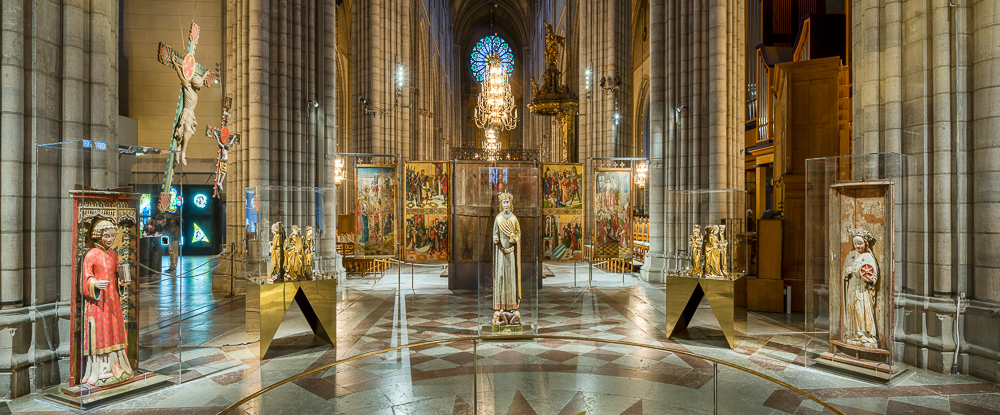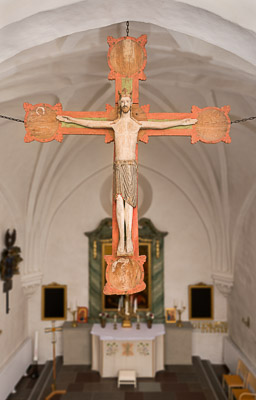
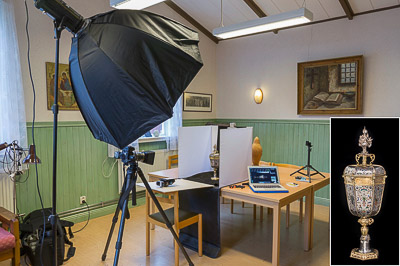
This summer (2014) there is an exhibition of local church artifacts at Uppsala Cathedral (himlenarhar.se), and my colleague Georg Lulich and I were lucky enough to be awarded the contract to take most of the photographs for the catalogue.
This was a dream job that involved visiting 35 churches in the diocese and photographing the beautiful works of art housed there.
But it was also very hard work, and as usual with ambitious projects, the deadline was tight – 4 weeks to drive 4000 km, take 5000 images for selection, and then process and deliver 300 to be included in the glossy 250 page A4 catalogue.
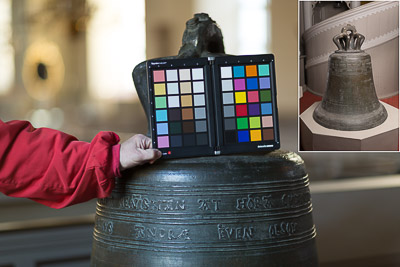
 The work was pretty varied, and drew on every corner of my experience and equipment bags. One day we would be taking close-ups of Russian ceramic eggs using tilt lenses and focus stacking to stretch the depth of field, and the next day we could be using a mast to photograph a crucifix suspended 6m up.
The work was pretty varied, and drew on every corner of my experience and equipment bags. One day we would be taking close-ups of Russian ceramic eggs using tilt lenses and focus stacking to stretch the depth of field, and the next day we could be using a mast to photograph a crucifix suspended 6m up.
The technical issues could all be overcome, but one of the challenges of being a freelance is that for the sake of the client and yourself, the work has to be done very efficiently, and there is seldom time for experimentation when on a commission. Sometimes you want to try a new idea, but if it doesn’t work the first time, you need to fall back on familiar procedures. And on the 4th day on the road, at 8am, in a strange church in the middle of nowhere, it’s good to have standard procedures that you can execute in your sleep.
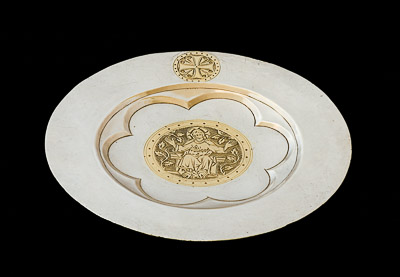 A personal favourite of mine was one of the first items, a gilded chalice from the 1200s, which was technically easy to make look good, and ended up being used extensively to advertise the exhibition. It also gave us an unjustified confidence that the rest of the project would be equally straightforward.
A personal favourite of mine was one of the first items, a gilded chalice from the 1200s, which was technically easy to make look good, and ended up being used extensively to advertise the exhibition. It also gave us an unjustified confidence that the rest of the project would be equally straightforward.
Least favourite at the time was a silver and gilt paten from the 1300s that was very hard to light in a way that picked out the relief without also picking up highlights on all the buckles and damage of the ages. This one took many hours to get a good shot of a rather simple piece.
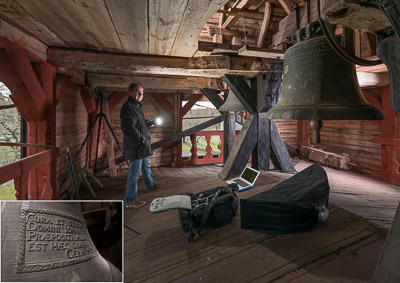
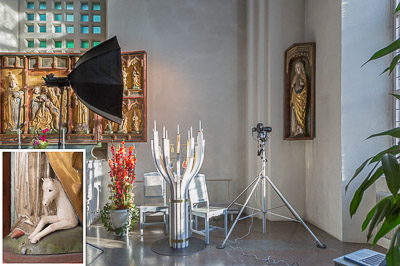 Another day we were booked in for two churches, and picked up the giant medieval key to the first where we would reproduce some ‘passion paintings’, which also sounded quick and easy. Except there were 17 of them, hanging 3m up above the pews, attached to the wall with intricately-twisted wire.
Another day we were booked in for two churches, and picked up the giant medieval key to the first where we would reproduce some ‘passion paintings’, which also sounded quick and easy. Except there were 17 of them, hanging 3m up above the pews, attached to the wall with intricately-twisted wire.
Taking down and rehanging each priceless painting involved delicate positioning of a ladder and a degree of acrobatics.
Luckily, in my younger days I was an enthusiastic rock climber, so am used to working with tools whilst balancing on one leg, with catastrophic consequences of falling or dropping something.
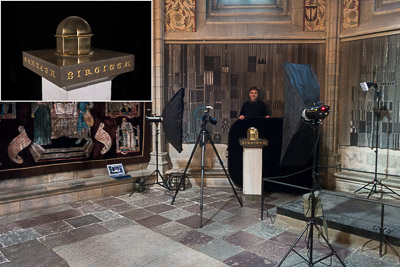
The paintings turned out to be rather cracked, so the surfaces were made of many small concave paint flakes, which made lighting them without getting highlights very difficult, even with cross-polarisation. We ended up with the lights so far to the side that we got shadows from the frames and had to composite several images from each painting in order to lose those.
After several hours of frantic work, we had to literally run to the car with our equipment in order to be on time to the next church.
Sadly there was no time for behind-the-scenes shots that day. They would have been fun.
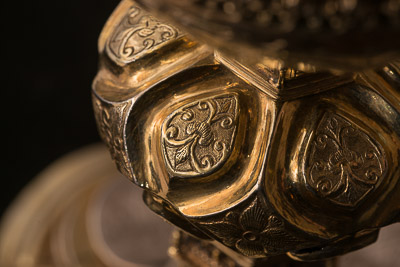 So those were the extremes, but in between were a lot of more predictable and routine shots, and in addition to all the buildings and artifacts, we also met a vast array of people, who were without exception very helpful and kind to us. We also got to see a lot of the beautiful autumn scenery between Märsta and Hudiksvall.
So those were the extremes, but in between were a lot of more predictable and routine shots, and in addition to all the buildings and artifacts, we also met a vast array of people, who were without exception very helpful and kind to us. We also got to see a lot of the beautiful autumn scenery between Märsta and Hudiksvall.
It was a very intensive month, being on the road and frantically processing the images, many of which needed to be masked and cut out to a black background, a tedious and time-consuming process which we usually avoided by careful lighting, but many times that is just not practical. But it was also a very rewarding project, and one I will remember fondly.
Here are some selected images from the project : Himlen är här slideshow
